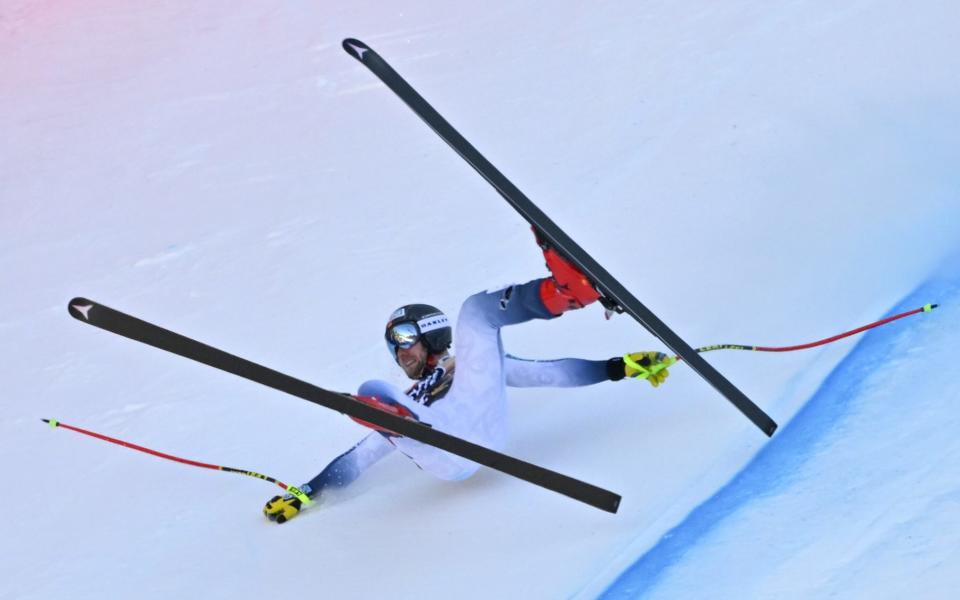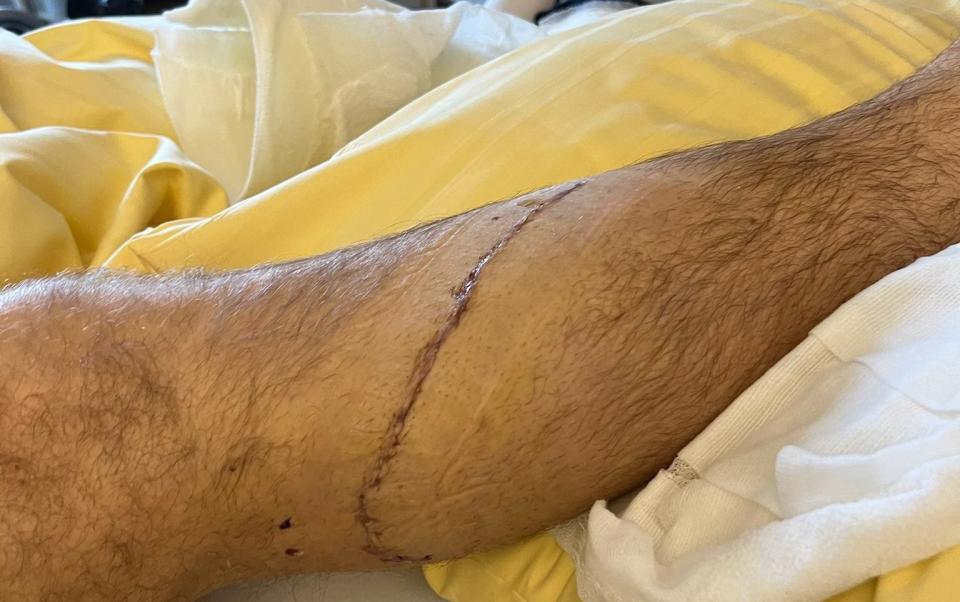‘If the best skiers are crashing, it makes you wonder’ – why the rise in skiing accidents?

When Mikaela Shiffrin, the most successful World Cup ski racer of all time, slammed into the safety fence at high speed during a downhill race in Cortina d’Ampezzo last week, the American’s army of fans were not the only ones left watching through their fingers as medics crowded around her.
The FIS, the International Ski and Snowboard Federation, which runs the World Cup events, has had a torrid winter as far as injuries to its star athletes are concerned.
Earlier this month, Shiffrin’s partner, Norwegian star Aleksander Aamodt Kilde, crashed into catch fencing at 120kph in Wengen, suffering a nasty laceration to his calf plus a dislocated shoulder and requiring surgery on torn ligaments. He is out for the season. Frenchman Alexis Pinturault suffered a season-ending crash at the same event.
Shiffrin’s main rival in the slalom World Cup standings, Slovakian Petra Vlhova, is likewise MIA after sustaining a knee injury following a crash in the women’s giant slalom in Jasna, a few miles from her hometown of Liptovsky Mikulas in the Tatra mountains.

The list goes on. Swiss Olympic champion Corinne Suter tore her ACL and damaged her meniscus in the same Cortina d’Ampezzo downhill as Shiffrin. Austrian Marco Schwarz, a former world champion who was leading the overall FIS standings, is also out for the season after crashing on the dark and bumpy Bormio downhill in late December.
Fortunately for Shiffrin (and the FIS), after being airlifted from the slopes and taken to hospital, her team released a statement saying her injuries were not as severe as feared. “Initial analysis shows the ACL and PCL seem intact,” it read. Shiffrin’s dream of becoming the first athlete, male or female, to reach 100 World Cup wins, could still become a reality in the next few weeks.
Pretty sure world cup skiing clips aren’t allowed on social media so if everyone’s cool and we’re in the trust tree. Here’s the Mikaela Shiffrin crash no one in the US is allowed to watch. pic.twitter.com/oCoH15jxRj
— Ben Durham (@BigDurham) January 26, 2024
But that has not stopped a debate raging in the wake of the recent deluge of accidents. Why so many? Are we seeing more than usual in FIS events or is it simply the case that they have involved some very high-profile athletes? Is ski racing becoming more dangerous?
To be clear, this is not at all the same debate as the one taking place in leisure skiing, which does appear to be becoming ever more wild. A recent Telegraph feature cited “overcrowded slopes, drunk rookies and a need for speed” as contributory factors to one of the worst seasons in history for recorded accidents. FIS World Cup events, though, are for the best skiers in the world. They take place on empty slopes. And only an idiot would tackle the Hahnenkamm drunk.
Why so many crashes?
The FIS is understandably cautious about declaring the recent spate of accidents a ‘trend’. “The last few weeks, specifically on the women’s tour, we have seen more crashes than usual,” a spokesperson told Telegraph Sport. “However, while not having the complete season data, so far across the season, the injury numbers appear to be on par with previous years.”
That may be true. But a number of athletes are becoming increasingly sceptical. As leading downhiller Sofia Goggia said: “If the strongest skiers are going down, it’s got to make you wonder.”
One theory is that the schedule has become overly crowded. January in particular was a busy month because of the number of cancelled races at the start of the season. The FIS scheduled two downhills for the men, in Wengen and Kitzbühel, and also two in Cortina for the women. ‘Speed weeks’, which feature multiple training sessions ahead of each race, are always more dangerous. Again, the FIS urged caution before drawing conclusions. “By the end of the season, we will be within the norm of number of races carried out,” the spokesperson said of suggestions of an ‘overcrowded’ calendar.
Lara Gut-Behrami, the Olympic super-G champion and a former overall winner, believes it is more complex than that, citing the grind of modern professional sport.
“Talking only about the number of races is pointless,” she said. ”There’s a ton of reasons that affect performance. True, the schedule is very full. But it’s been that way for years. Even when there are no races all the athletes go train.
“There’s more stress because of everything else surrounding the sport. Whereas before it was only about skiing, now an athlete has to multitask and worry about curating their image and marketing themselves. But the days still last 24 hours.”
For now, the FIS is happy to defend its safety record. It dismissed suggestions that global warming or changing snow conditions could be a factor behind recent crashes. “At this time there is no correlation between global warming and the injury rate of the racers,” a spokesperson stressed, adding that stringent checks were carried out before and during every World Cup event. The FIS noted in particular the Jury and Racer’s inspection prior to every run, where all competitors and coaches have the chance to fully inspect the course. “This gives them a good feel for the snow, the course set and any other factors that could impact the race such as wind, light or shadows etc. Additionally, for the downhill, the coaches inspect the course the day before any training runs.”
Perhaps it is simply that the stakes are getting higher? More money, better equipment, sharper edges?
It is certainly true that athletes could be doing more to help themselves. Cut-proof underwear, made of resistant polyethylene that is said to be stronger than steel or Kevlar on a per-weight basis, might have prevented Kilde’s grisly calf laceration. It is mandatory in parallel events. But downhill racers do not like wearing it because it slows them down.

In much the same way as the ‘Halo’ device was introduced in Formula One in the face of protestations from drivers, perhaps skiers need protecting from themselves? Goggia agrees. “It should be mandatory,” the Italian said.
“It’s a no-brainer,” US women’s coach Paul Kristofic agreed. “But there’s always people that push against these things for various reasons. There wasn’t unanimous support for the airbag [inflatable devices that skiers wear under their racing suits] either.”
The FIS said there were no plans for now to compel racers to wear cut-proof underwear, saying only that the FIS “encouraged” its competitors to do so. “All rule changes for the upcoming seasons are discussed by the Alpine Rule Committee at the annual FIS Spring meetings held in May,” it added.
One or two more accidents of the type suffered by Kilde and a change will surely be passed into law. It has been a grisly few weeks for skiing and questions are mounting.

